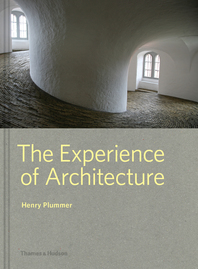Beneath the veneer of respectability or trustworthiness, a little bit of Jack Kerouac lurks in us all. Haven’t you, in the summer doldrums, wanted to chuck a few things in the back of a black convertible and hit the road--the mythic, American asphalt dreamstream that seduces us with the promise of abandonment and freedom? Bad boy Kerouac’s travels, and the metaphorical, picaresque adventures he encountered, lie at the core of a persistent 21st century dilemma: mobility runs counter to environmental responsibility.

Unlike the heady days of the mid-twentieth century, when gasoline burned, burned, burned for pocket change, today we take a measured approach when confronting gas pumps employing higher math. A $70.00 fillup, conveniently debited from the checking account, to reach the cabin by the lake in the four-wheeled drive SUV. How can we reconcile our desire (for motion, mobility, ultimate freedom) with finite resources? The road looks tough since Kerouac’s ‘47 Caddie ran out of gas.
The relationship of movement and architecture, seemingly disparate terms, is drawing the attention of architects, scientists, engineers, planners, and politicians with renewed vigor. Routinely, even heroically, architects have planned intricate transportation centers at the interface of the pedestrian, the automobile, buses, light rail, trains, and airlines. At its most complex (think Reed and Stern and Warren and Wetmore’s Grand Central Station in 1913) and its most recent incarnations, we have encouraged the ease of use of public transportation.
Movement has taken new turns. In recent years, the Dutch architect, Francine Houben, who leads the firm Mecanoo, took “mobility” as a central concern in her intellectual and practice life, seeking fresh approaches to notions of transportation, commerce, and housing, for example, expanding on the popular idea of mixed-use to include strategies of transportation and access to building projects. Internationally, architects are considering not only housing, but the combined effects as communities of buildings: relationship to transit, to workplace, to childcare, to recreation. Architecture, whose gravity-induced fixity includes the study of “statics,” reinvents itself as a discipline.
At another level, seemingly fixed structures are becoming kinetic. Think of Peter Eisenman’s Phoenix Stadium, with its retractable roof and movable natural grass field, where the entire playing surface can be rolled outside the building for maintenance or scarce rainfall. Think of Calatrava’s poetic Milwaukee Art Museum, with wings that open and close. The Chicago architect Jeannie Gang has pursued a fascination for motile structures, including the construction of the Starlight Theater at Rock Valley College whose roof folds back for skylit performances.
Sometimes we prefer to truck it in. Prefabrication has intrigued a new generation of architects, such as Jennifer Siegal and her Office of Mobile Design, Philadelphia’s Kieran and Timberlake and their Loblolly House, Shigeru Ban and LOTEK who follow in the footsteps of Jean Prouvé’ s Maison Tropicale (1951) and Paul Rudolph’s proposed prefabricated tower (with 4,050 units) to create individual components and entire buildings that can be hauled from place to place. The inventor of things that fold (toys, structures), Chuck Hoberman, has engineered a “Rapidly Deployable Structure” that can be erected in the field, such as for the military, in less than three minutes by four people.
On display and the subject of intense discussion at a recent June conference at the University of Hawaii at Manoa (“Architecture + Movement”, an international symposium on Asia Pacific architecture), the architect William Mitchell presented the multidisciplinary research of his students at MIT, radical in its approach. Rather than propose a new way of building, Mitchell unveiled the design for a new form of conveyance—a two-person, stackable, folding car for zipping from transit to grocery. Theoretical and headed for testing as a prototype, the MIT vehicle brings architectural thinking to an intractable urban dilemma, and if more fortunate than the electric car, could transform urban streets.
Architects may be neither regional planners nor politicians nor economists nor inventors. We may be artists, and often eager to travel, but comprehensive vision convinces us that Kerouac’s road has limits. If we are clever, we can change gears and keep on moving. If we are clever, we can redesign the road.
If you wish to write to our editor-in-chief you can email him rivy@mcgraw-hill.com.



